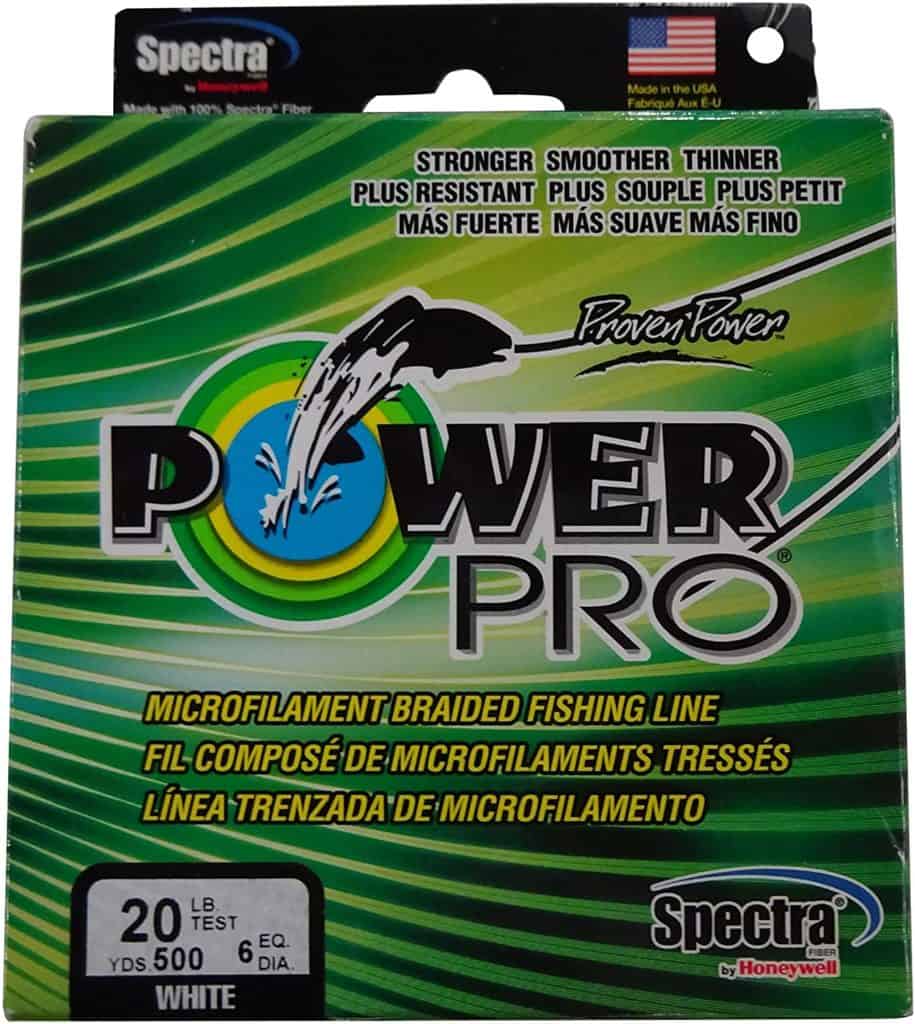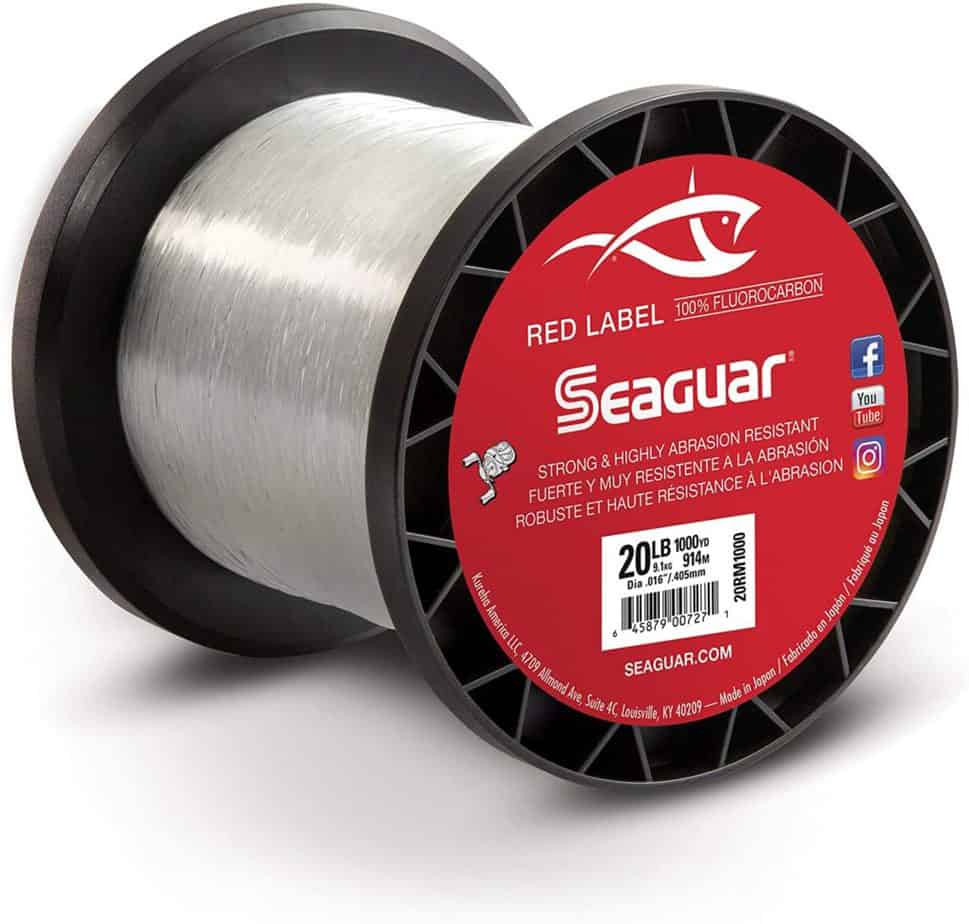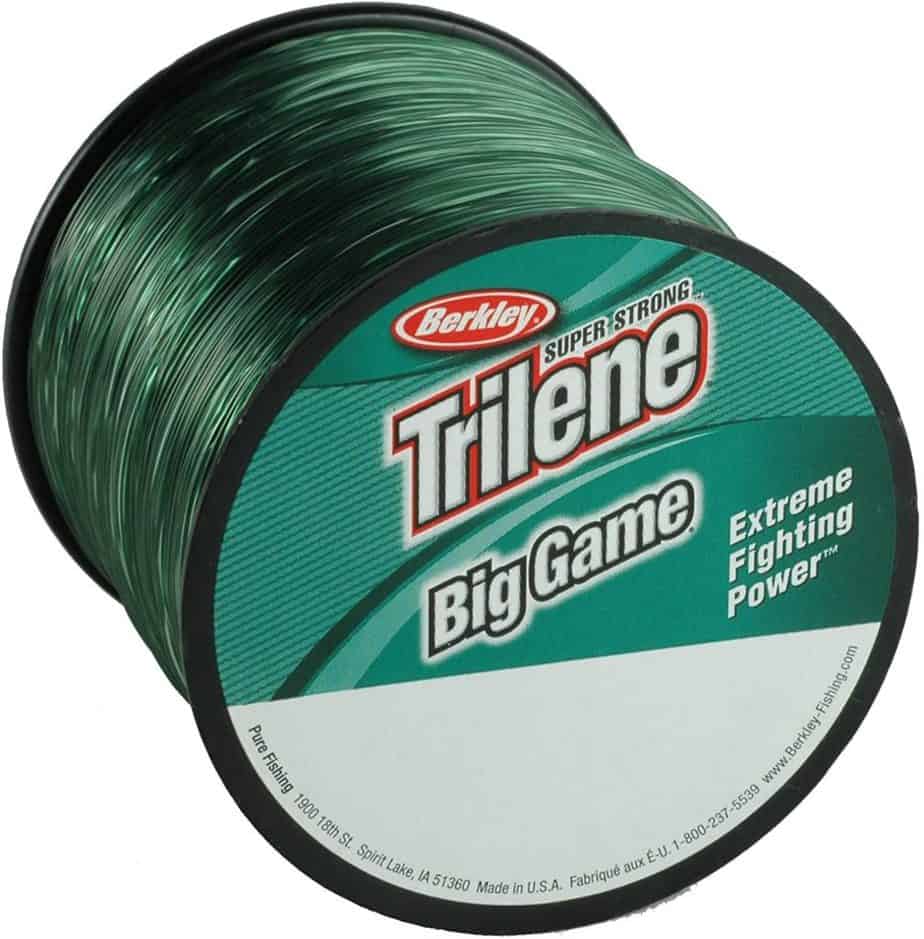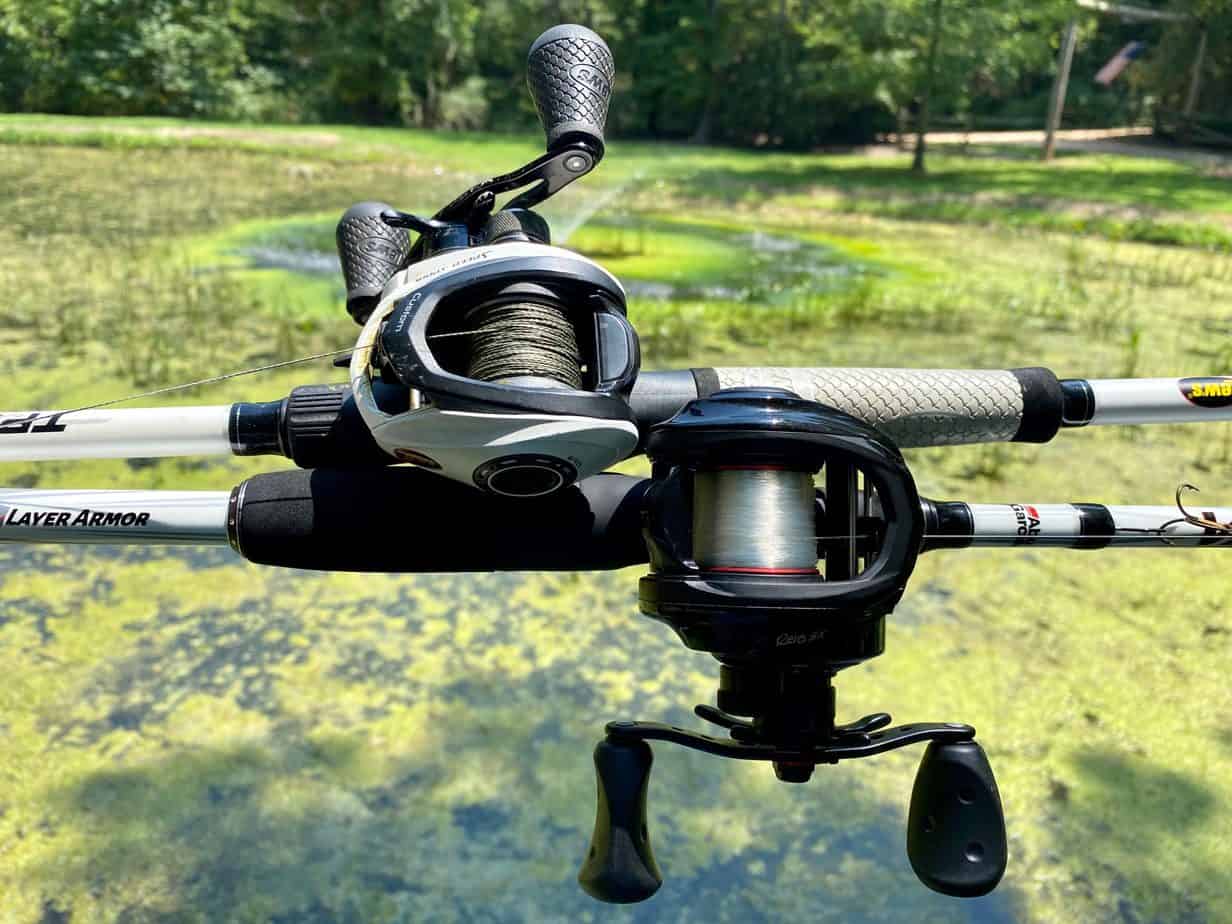There are three main types of fishing line used in conventional freshwater fishing. Knowing which type to use and when to use it can be critical in having a successful day on the water.
In a nutshell, braided line is made up of a strand of braided manmade fibers, fluorocarbon consists of a single strand of natural and synthetic materials, and monofilament is a single strand commonly made from nylon.
Let’s get into the details and look at what each type of line is good for.
Braided Line

What is Braided Line?
A braided line is made of combining manmade fibers into one strand.
What is it Good for?
Braided line is known to be incredibly tough. It is not going to break easily meaning if you are intending to catch larger fish who are going to put up a fight than this will be right for you.
It is also great for environments where you might snag a line easily like swampy or heavily forested areas. The best kind of fishing for this line is deep sea trolling but some people do use a monofilament line attached to the end as a leader for fishing in lakes and streams.
Why is it Better than the Other Two?
Braided line does not absorb much water meaning the knots you tie that stay are not going to loosen when the line gets wet if tied properly. It also has no memory making it coil up less than the other two which increases its lifespan.
The line is also the strongest kind of line available and is resistant to abrasions meaning you are unlikely to damage it even in the toughest environments.
Because the line has a little stretch, it is quite easy to tell when there are hits on the line meaning you will likely never miss an opportunity to reel in a catch.
This stiffness could be misconstrued as a drawback since the fish will also feel more resistant meaning they would be more likely to drop the bait, but this can easily be mitigated by using a pole with a softer tip.
What Are Its Drawbacks?
Because of its distinctive braided pattern, it is not very natural and has a tendency to spook fish especially in clear water. Since the line is also very tough, some people have trouble tying knots into it since it is so strong and is naturally slippery.
Often, the knots you tie in the line will come undone and it is not common for people to have to use other methods, like glue, to prevent the knot from slipping.
Because the line is so strong, it can wear out your equipment like the reel and will cause damage to your hands if you are not careful with it. It will also not pack as tightly in the spool and usually requires other kinds of lines, like nylon monofilament, to make up the majority of the spool.
A new braided line also usually needs a period of time to get broken in since the new line often kinks up until it has gone through the spool a couple of times.
Fluorocarbon Line

What is Fluorocarbon Line?
Fluorocarbon line is actually of similar design to monofilament line. It consists of a single strand of material. The material that makes up the line all comes from a variety of both natural and synthetic sources but one of the most common in the fishing world is polyvinylidene difluoride.
What is it Good for?
One of the best attributes of the line is just how versatile it is. Because the line is strong yet stringy it can make bait waft naturally in the water as well as have enough strength to push through the water column.
The line can also be cast further than lines of similar strength-giving anglers an advantage.
Because of its lightweight, the line works great with most lures and several studies have shown the catch rate is almost double that of other lines.
That is because the line is neutrally buoyant meaning the lures can “run” or move naturally with the current, unlike heavier lines that make the lure sit there awkwardly.
As far as which situations they work best in, in years past it was just heavier saltwater fishing. But as technology has improved since it was first invented in the 1970s to be used for a wide range of fresh and saltwater fish of all sizes.
It is consistently used by some of the best anglers in the world in fishing competitions and outperforms practically every other type of line.
Why is it Better than the Other Two?
Fluorocarbon line combines the best characteristics of all three lines. It is incredibly strong and resistant to abrasions meaning no matter where you fish you can rest assured no fish or rock is going to easily break the line.
The line is also incredibly sensitive meaning even the smallest pull or tug will be easily felt so you will miss fewer opportunities.
Fluorocarbon lines also absorb light, unlike monofilament lines that reflect it. Less light means less fish will possibly be spooked by which increases your chances of a good catch. The line also incorporates most of the positive attributes of monofilament in that it is incredibly pliable but will not bunch or coil up.
Because the line is smaller compared to other lines of similar strengths, its casting distance is fairly far and making it more lightweight for the same kind of strength.
What Are Its Drawbacks?
Despite all the benefits of this line, there are still a few trade-offs. For starters, the line is very expensive and is not affordable for those who might just fish occasionally as a hobby.
The line also needs to be paired with the right spool, especially if using older models of fluorocarbon line, since it has a tendency to over spool.
It also sinks faster than other lines meaning it is not the right fit for those wanting to catch fish near the surface. Tying knots is more difficult since you need to ensure the line is wet or you will snap it.
The tough knots also mean you would be limited in catching smaller fish since the knots required to catch larger ones are either too difficult to tie for most or come undone too easily to be useful.
Monofilament Line

What is Monofilament Line?
Monofilament consists of a single strand of material. This single strand can be made out of a wide range of materials, but the most common is nylon. Often, different polymers will be mixed with the nylon to give it increased strength.
What is it Good for?
Monofilament line has been around for a long time and anglers have praised it for years for its versatility and affordability. It is generally considered an all-purpose type of line and will benefit most of your casual fishermen.
Using lures works great for it since it is translucent and can draw fish in close. Often, because fluorocarbon and braided lines are expensive, people will outfit most of their reel with monofilament line and attach other specialty lines at the end to get the most benefit while also staying within budget.
Why is it Better than the Other Two?
Monofilament is the cheapest and most commercially available line of all three of these listed. It has the largest variety of strength tests and can be used for the widest variety of fishing.
The lines also come in a wide range of colors including translucent meaning it is the most capable of the three for stealth and not spooking the fish.
What Are Its Drawbacks?
Because the line is not rated for larger fish, it is not recommended to use it for outings like deep sea trolling. Unlike braided line, monofilament line has a tendency to coil up if stored improperly.
It is not uncommon for anglers to have to change out their line after the end of each fishing season for this reason. Monofilament lines also absorb a lot of water which will make any knots you put into it loosen up when the line stays submerged for a while.
What is the Best One for Me?
As you can see, there are pros and cons to every type of line. Picking the right one for you depends on what qualities you desire the most and, more importantly, to the fish you are trying to catch.
The closest line to one-size-fits-all would definitely be fluorocarbon, but again this has its own drawbacks as discussed previously.
Conclusion
For the most versatile line, monofilament is definitely the way to go, and for those who prefer strength braided lines are it. But at the end of the day, many anglers combine at least two of these lines for their gear, and it all comes down to trial and error to see which kind of line suits best with your fishing style.

